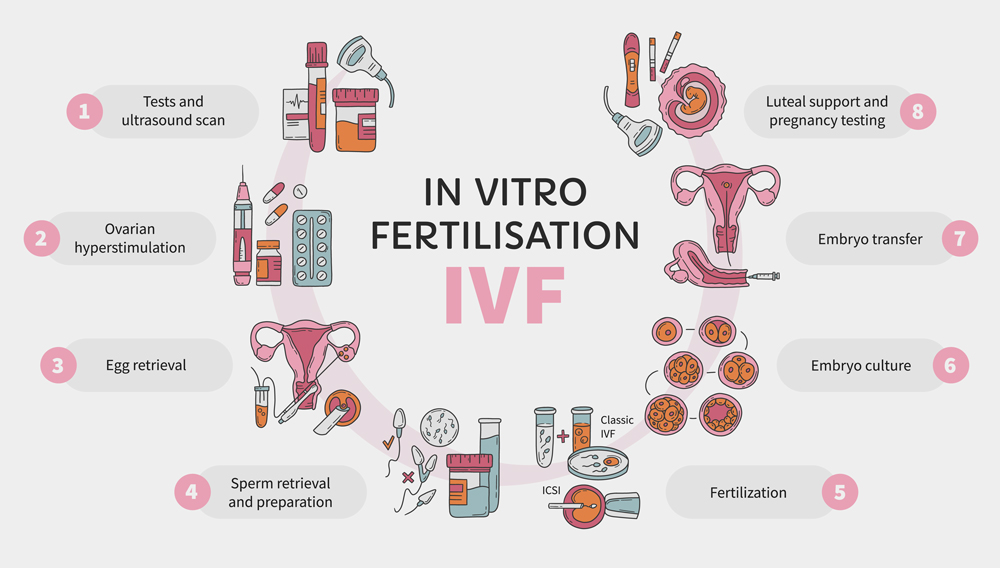For Women
Step 1: Initial consultation
Detailed discussion about the cause of infertility and medical checkup for the couple combined with blood tests including the hormones and semen analysis
Step 2: Helping your ovaries produce more eggs by hormones
During your periods, you take a fertility hormone injections called follicle stimulating hormone (FSH) and LH.
FSH increases the number of eggs your ovaries produce. This means more eggs can be collected and fertilised. With more numbers of fertilised eggs, the clinic has a greater freedom of embryos to use in your treatment.
Step 3: checking progress of your injections
The fertility specialist will keep an eye on you throughout the treatment. You’ll have 2-3 visits to monitor the response of injections and, in some cases, blood tests are done.
Before your eggs are retrieved, you’ll have an trigger injection of a hormone called human chorionic gonadotrophin (hCG) that helps your eggs to mature.
Step 4: Egg collection
You’ll be given anesthesia and eggs will be collected from both ovaries using a tiny needle that’s passed through vagina under ultrasound guidance.
This is a simple/minor procedure that lasts about 15 to 20 minutes.
Some women experience minor cramps or little vaginal bleeding after this procedure.
Step 5: fertilization of the eggs
The collected eggs are mixed with your husband’s sperms in a IVF laboratory to fertilise them.
In most cases, each egg is injected individually with a single sperm. This is called intra-cytoplasmic sperm injection or ICSI.
The fertilised eggs (embryos) continue to grow in the laboratory for up to 6 days and are freezed. The best 1 or 2 embryos will be chosen for transfer in next menstrual cycle.
Step 6: embryo transfer
In the next menstrual cycle, the preparation for the embryo transfer is started and it will take 15-20 days for the preparation. Embryo transfer is done using a thin tube called a catheter that’s passed through vagina and embryos are deposited in uterus at right place.
The number of embryos that will be transferred should be discussed with the couple.
Step 7: pregnancy test
Pregnancy test is performed after 10 days from embryo transfer to check whether woman is pregnant or not.





